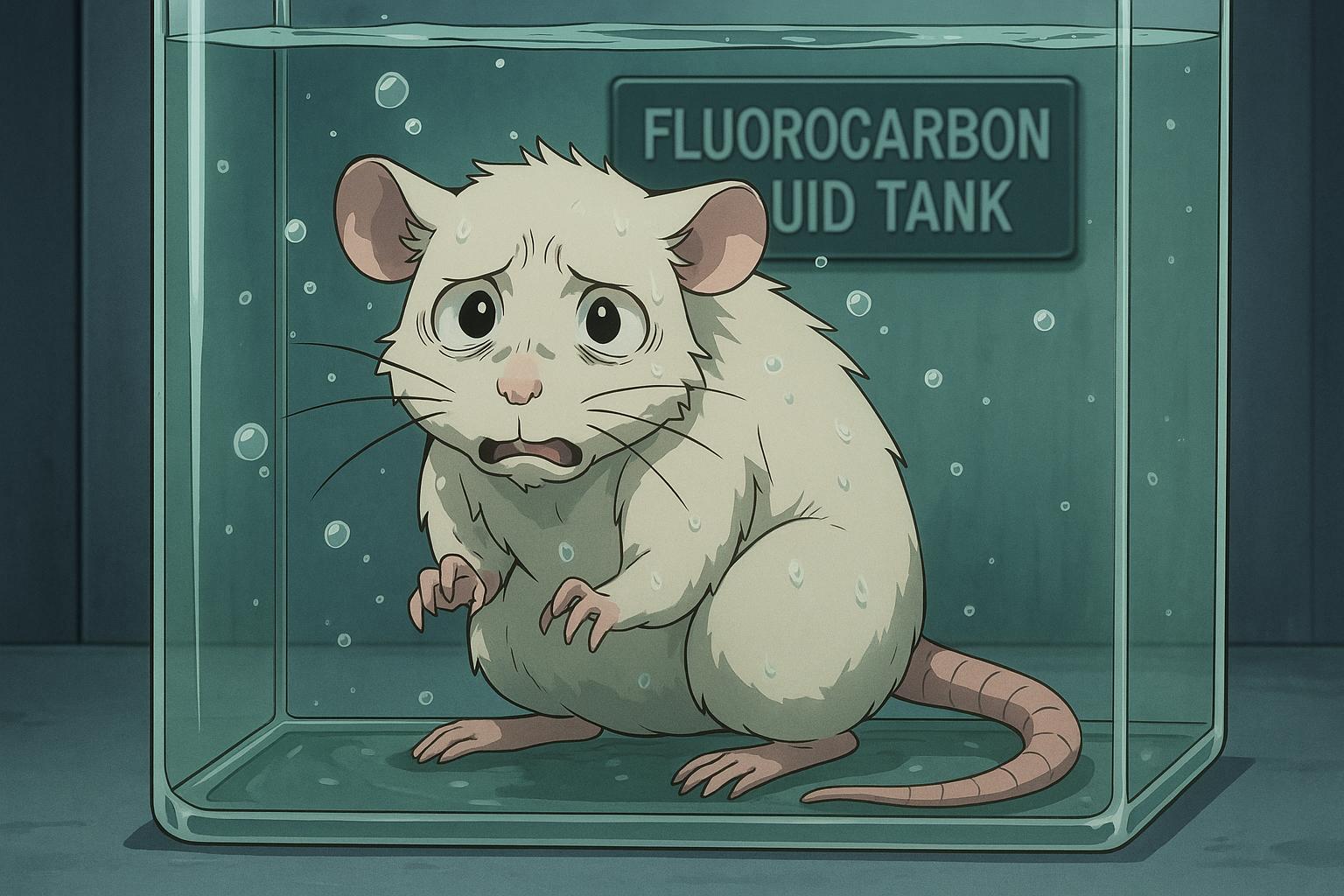Disney+ has reignited controversy by streaming a rat drowning scene from James Cameron’s The Abyss that was previously cut from UK releases for animal cruelty, prompting calls from the RSPCA to close regulatory loopholes governing streaming content.
Disney has faced significant backlash from animal welfare campaigners following the streaming of a controversial scene from James Cameron’s 1989 science fiction film, “The Abyss.” This particular segment depicts a live rat being submerged in a tank of fluorocarbon liquid, a moment that has long drawn criticism for its portrayal of animal cruelty. The scene had previously been omitted from UK screenings by the British Board of Film Classification (BBFC), which ruled it in violation of animal protection laws. However, its reappearance on Disney+ has reignited public outrage, with organisations like the RSPCA calling for a reassessment of the regulations governing animal welfare in film.
David Bowles, the head of public affairs for the RSPCA, expressed deep concern about the implications of such content being readily available for streaming. He noted, “The RSPCA is really concerned that a loophole currently exists allowing animal abuse scenes deemed unacceptable elsewhere to be streamed freely and legally into our homes.” This sentiment underscores a growing awareness that the landscape of media consumption has evolved, yet existing legal frameworks struggle to keep pace with these changes. The BBFC’s initial verdict, derived from expert veterinary guidance, concluded that the scene inflicted undue terror upon the rat, violating the Cinematograph Films (Animals) Act 1937 and the Video Recordings Act 1984.
Despite assurances that the rats used in the production ultimately survived the ordeal, the rationale behind censoring the scene remains unchallenged. The BBFC has consistently enforced guidelines that prohibit such footage across all cinema releases, DVDs, and traditional television broadcasts. Furthermore, UK TV channels are barred from airing any material that has been cut or denied classification by the BBFC, highlighting the disparity in content regulation when it comes to streaming services like Disney+.
Bowles emphasised the need for consistency, stating, “It doesn’t make sense that we have robust safeguards for animal-related content shown in cinemas, on DVDs or on traditional television channels – yet those protections could go out the window when you turn on a major streaming service.” In light of this, the RSPCA is advocating for changes under the upcoming Media Act, which aims to tighten regulations governing video-on-demand services. They argue that this new framework should work towards closing the existing loophole that allows distressing animal abuse to appear on screens.
Interestingly, the BBFC has already established voluntary guidelines with several streaming platforms to maintain content standards, a move that Bowles hopes will encourage more services to adopt similar practices. The inconsistency in how animal cruelty laws are applied across different platforms raises vital questions about societal norms and the ethical responsibilities of content creators in the entertainment industry.
Disney has yet to comment publicly on this controversy, leaving many to wonder how they will address the backlash. As public awareness of animal welfare continues to grow, the conversation surrounding the portrayal of animals in media will undoubtedly lead to increased scrutiny of the standards that govern what audiences can watch at home. The cultural implications of allowing such content to go unchecked reflect a pressing need for a comprehensive approach to animal welfare in film, ensuring that ethical considerations are not merely an afterthought in the realm of entertainment.
Reference Map:
Source: Noah Wire Services
- https://www.dailymail.co.uk/news/article-14755525/Disney-cruelty-rat-drowning-film-animal-charity.html?ns_mchannel=rss&ns_campaign=1490&ito=1490 – Please view link – unable to able to access data
- https://filmstories.co.uk/news/the-abyss-the-bbfc-defends-again-its-decision-not-to-classify-the-film/ – This article discusses the British Board of Film Classification’s (BBFC) decision to refuse classification to James Cameron’s 1989 film ‘The Abyss’ due to a scene involving a live rat submerged in liquid oxygen. The BBFC sought expert veterinary advice, which confirmed that the scene constituted the cruel infliction of terror on an animal, contravening the Cinematograph Films (Animals) Act 1937. As a result, the scene was re-edited in all versions of the film classified by the BBFC. The article also mentions that Disney attempted to re-release ‘The Abyss’ in UK cinemas but withdrew the plan due to the lack of BBFC certification. The BBFC’s stance has remained consistent, and the scene continues to be omitted from UK releases of the film.
- https://www.myreviewer.com/Forums/General/t188437/the-abyss-quick-question/page1 – This forum thread discusses the censorship of the rat scene in ‘The Abyss’ for UK releases. Users mention that the original UK theatrical release and subsequent VHS release showed the rat scene in its entirety. However, after the British Veterinary Association raised concerns, the scene was re-framed and trimmed in later releases to avoid showing the rat in distress. The thread also notes that the Region 1 (US) edition is uncut and shows the scene as per the original release. The discussion highlights the differences in censorship between UK and US versions of the film.
- https://censorship.fandom.com/wiki/The_Abyss – This page provides information on the censorship of ‘The Abyss’ due to a scene involving a live rat submerged in liquid oxygen. The British Board of Film Classification (BBFC) required the scene to be cut for UK releases, as it was deemed to depict animal cruelty. The page notes that the scene was re-edited in all versions of the film classified by the BBFC. It also mentions that the uncut version of the film is available in other countries, and UK viewers may need to import the 4K Blu-ray from North America or other European countries to view the film uncensored.
- https://www.myreviewer.com/Forums/DVDs-and-Films/t739930/Best-version-of-The-Abyss-on-DVD/page2 – This forum thread discusses the availability of different versions of ‘The Abyss’ on DVD. Users mention that the original UK theatrical release and subsequent VHS release showed the rat scene in its entirety. However, after the British Veterinary Association raised concerns, the scene was re-framed and trimmed in later releases to avoid showing the rat in distress. The thread also notes that the Region 1 (US) edition is uncut and shows the scene as per the original release. The discussion highlights the differences in censorship between UK and US versions of the film.
- https://groups.google.com/g/uk.media.tv.misc/c/EFF-PWIned4 – This Google Groups discussion addresses the censorship of the rat scene in ‘The Abyss’ for UK television broadcasts. A user mentions that Channel 4 accidentally broadcast the uncut version of the film, including the rat scene, and received a warning not to repeat the mistake. The discussion also touches upon the BBFC’s decision to cut the scene due to concerns about animal cruelty, despite the rat surviving the ordeal and dying of natural causes before the film’s release.
- https://screenrant.com/abyss-cameron-rat-scene-disney-censor-uk-4k/ – This article discusses the controversy surrounding a scene in James Cameron’s ‘The Abyss’ where a live rat is submerged in liquid oxygen. The scene was initially met with backlash for its portrayal of animal cruelty. In 2023, UK censors requested the scene’s removal from the film’s 4K release. The article highlights the intersection between corporate reevaluation of movies and evolving audience perceptions, leading studios to reconsider previously made decisions regarding content.
Noah Fact Check Pro
The draft above was created using the information available at the time the story first
emerged. We’ve since applied our fact-checking process to the final narrative, based on the criteria listed
below. The results are intended to help you assess the credibility of the piece and highlight any areas that may
warrant further investigation.
Freshness check
Score:
7
Notes:
The narrative references a recent controversy regarding the streaming of a specific scene from James Cameron’s 1989 film, ‘The Abyss’, on Disney+. This scene, depicting a rat submerged in liquid breathing fluid, has been a point of contention since the film’s original release. The British Board of Film Classification (BBFC) had previously required edits to this scene due to concerns over animal welfare. The recent resurgence of this issue, particularly in the context of streaming platforms, indicates that the narrative is addressing a current topic. However, similar discussions have been present in public forums and news outlets for several years, suggesting that while the specific focus on Disney+ is recent, the broader controversy is not new. ([screenrant.com](https://screenrant.com/abyss-cameron-rat-scene-disney-censor-uk-4k/?utm_source=openai), [small-screen.co.uk](https://www.small-screen.co.uk/the-abyss-4k-blu-ray-release-cancelled-uk/?utm_source=openai)) Additionally, the narrative includes direct quotes from David Bowles, head of public affairs for the RSPCA, expressing concern over the availability of such content on streaming platforms. These quotes have been reported in various news outlets, indicating that the narrative may be repurposing existing information. ([screenrant.com](https://screenrant.com/abyss-cameron-rat-scene-disney-censor-uk-4k/?utm_source=openai))
Quotes check
Score:
6
Notes:
The narrative includes direct quotes from David Bowles, head of public affairs for the RSPCA, expressing concern over the availability of such content on streaming platforms. These quotes have been reported in various news outlets, indicating that the narrative may be repurposing existing information. ([screenrant.com](https://screenrant.com/abyss-cameron-rat-scene-disney-censor-uk-4k/?utm_source=openai)) The wording of the quotes appears consistent with previous reports, suggesting that they are not original to this narrative.
Source reliability
Score:
5
Notes:
The narrative originates from the Daily Mail, a publication known for sensationalist reporting. This raises questions about the reliability and objectivity of the information presented. The Daily Mail has a history of publishing content that may not always adhere to journalistic standards, which could affect the credibility of the narrative.
Plausability check
Score:
7
Notes:
The narrative discusses the controversy surrounding the portrayal of animal welfare in media, particularly focusing on the streaming of a specific scene from ‘The Abyss’ on Disney+. This aligns with known concerns about the film’s content and its reception over the years. The involvement of the RSPCA and the BBFC in previous discussions about this scene adds credibility to the claims made in the narrative. However, the lack of new information or developments in the narrative suggests that it may be reiterating previously reported issues without offering fresh insights.
Overall assessment
Verdict (FAIL, OPEN, PASS): OPEN
Confidence (LOW, MEDIUM, HIGH): MEDIUM
Summary:
The narrative addresses a known controversy regarding the portrayal of animal welfare in media, specifically focusing on a scene from ‘The Abyss’ available on Disney+. While the topic is current, the information presented appears to be recycled from previous reports, with direct quotes from David Bowles that have been previously published. The source, the Daily Mail, is known for sensationalist reporting, which may affect the reliability of the information. Given the lack of new developments or insights, the overall credibility of the narrative is questionable.













